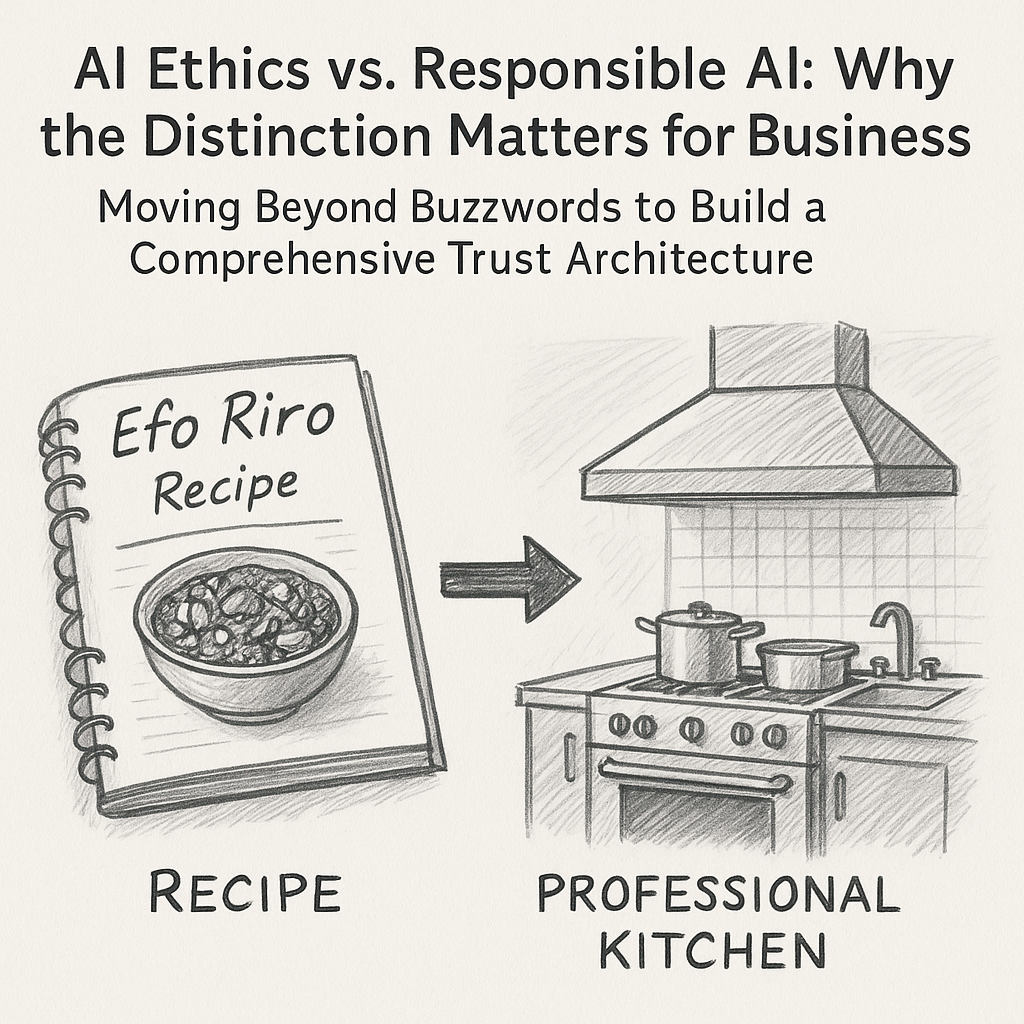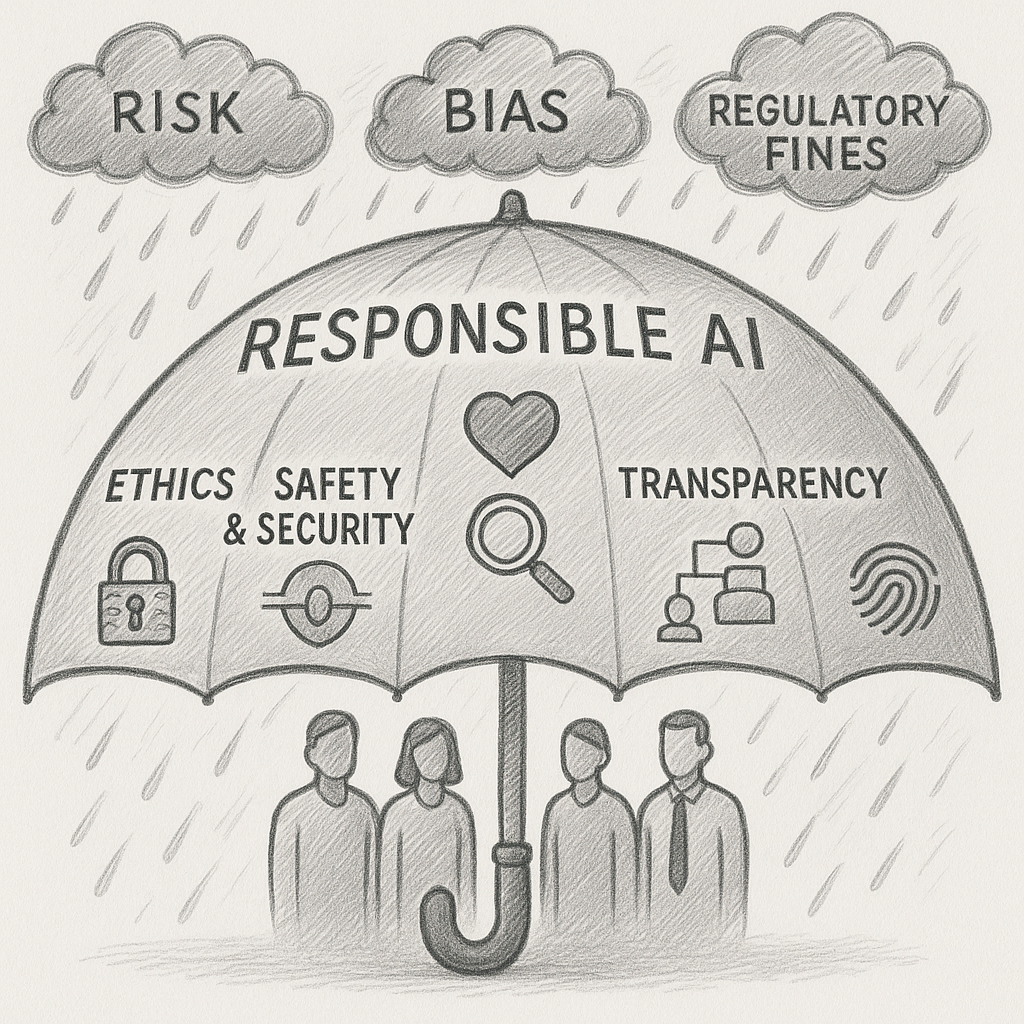In my family, my grandmother’s recipe for Efo Riro is a sacred text. It’s a set of principles about balance, flavor, and tradition—a guide to creating something wonderful. It is, in essence, our family’s "Efo Riro Ethics." But if I wanted to serve that dish safely to ten thousand customers every day, that recipe alone would be dangerously insufficient. I would need an industrial-grade kitchen, hygiene protocols, supply chain integrity, and trained staff. I would need a comprehensive operational plan.
This is the single most important distinction I make for leaders navigating artificial intelligence today. Too often, we talk about the recipe—AI Ethics—when what we desperately need to build is the entire professional kitchen: Responsible AI.
The Core Distinction: The 'Why' vs. The 'How'
To bring clarity to your own AI strategy, let's separate these concepts cleanly.
AI Ethics is the "Why." It is your organization's moral compass. It is the difficult, human-led work of debating and defining your principles *before* you build. It is the recipe.
Responsible AI is the "How." It is the complete, multi-disciplinary operational framework that translates your ethical principles into reality. It is the machinery of trust. It is the certified kitchen.
You cannot build the kitchen if you don't have a recipe, but the recipe is not a substitute for the kitchen.

Visualizing the Framework: The Responsible AI Umbrella
When I talk about building a governance framework, I often sketch a simple diagram on a whiteboard to make it tangible. I call it the Responsible AI Umbrella.

The entire canopy represents your holistic program. It's the shield that protects your customers, your brand, and your shareholders. It is engineered from five essential panels that align with NIST's AI Risk Management Framework and industry best practices.
- Panel 1: Ethics (The Moral Compass): This is the apex, holding your values. It answers the question, "Should we do this?"
- Panel 2: Safety & Security (The Structural Integrity): This is the engineering core, ensuring your system is robust and reliable. It answers, "Will this work as intended without causing harm?"
- Panel 3: Transparency (The Clear View): This represents explainability and documentation, demystifying the "black box." It answers, "Can we all see how this works?"
- Panel 4: Accountability (The Chain of Command): This is the human governance structure, defining ownership and liability. It answers, "Who owns the outcome?"
- Panel 5: Privacy (The Personal Shield): This is the commitment to protecting data rights and user consent. It answers, "Are we respecting our users?"
This framework builds on established approaches like Partnership on AI's principles while providing a practical operational structure for implementation.
Making it Practical: Tuning the Dials
While every organization needs a complete umbrella, different industries must "turn up the dial" on certain panels based on their unique context.
- In Healthcare, the dials for Safety and Privacy must be at maximum. The cost of a misdiagnosis or a breach of patient trust is non-negotiable.
- In Financial Services, the dials for Transparency and Accountability are paramount.When an algorithm denies a loan, regulators like the Federal Reserve demand clear explanations to ensure compliance with fair lending law.
- In E-commerce, the Ethics and Privacy dials are critical to prevent discriminatory pricing and manage the delicate balance between personalization and intrusion.
Conclusion: Precision Leads to Advantage
The organizations that will win in the age of AI are not those with the best algorithms, but those with the most trustworthy systems. Building that trust is impossible without strategic clarity.
Look at your own AI program through the lens of this framework. Have you just been talking about the recipe, or are you building the certified kitchen? Start by assessing which panels of your umbrella need the most attention—most organizations discover they're strong on ethics but weak on accountability..